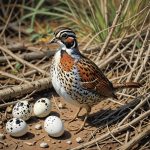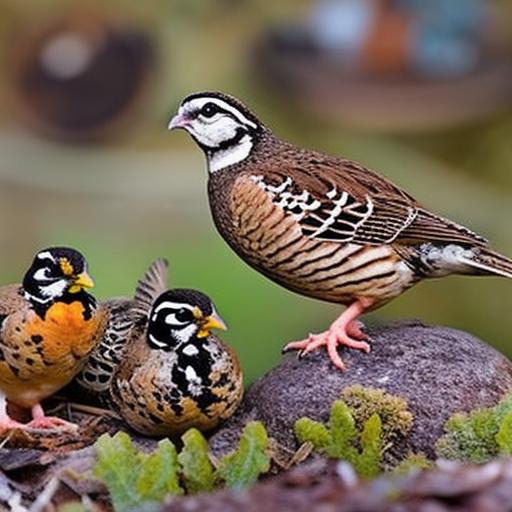Delicate and endearingly tiny, button quail eggs hold the promise of new life within their speckled shells. Hatching these precious eggs is a truly rewarding experience, but it requires careful attention and tender care. In this guide, we will explore the step-by-step process of hatching button quail eggs, from setting up the incubator to caring for the adorable hatchlings. Join us on this enchanting journey of nurturing and witnessing the miracle of life unfold before your eyes.
Table of Contents
To prepare the incubator for button quail eggs, you will need to ensure the habitat is optimal for the eggs to hatch successfully. Start by cleaning the incubator thoroughly with a gentle disinfectant to remove any bacteria that could harm the eggs. Once the incubator is clean, set the temperature to around 99.5 degrees Fahrenheit, which is the ideal temperature for button quail eggs to hatch. Make sure to monitor the temperature closely using a reliable thermometer throughout the entire incubation period.
Next, add a layer of clean substrate, such as paper towels or hatchling pads, to the bottom of the incubator to provide a soft and supportive surface for the eggs. Place a small dish of water in the corner of the incubator to maintain humidity levels between 40-50%. Humidity is crucial for the eggs to develop properly, so be sure to check the water levels regularly and refill as needed.
| Day | Temperature (F) | Humidity (%) |
| — | —————- | ———— |
| 1 | 99.5 | 45 |
| 2 | 99.5 | 48 |
| 3 | 99.5 | 50 |
Creating the optimal environment for incubation
Button quail eggs can be successfully hatched with the right environment and care. To begin the incubation process, it is important to prepare a suitable incubator that maintains stable temperature and humidity levels.
Here are some tips to help you hatch button quail eggs successfully:
- Temperature: Keep the incubator temperature at around 99.5 degrees Fahrenheit.
- Humidity: Maintain humidity levels between 45-55% for the first 14 days, then increase to 60-70% for the final days before hatching.
- Turning: Turn the eggs 3-5 times a day for the first 14 days to prevent the embryos from sticking to the shell.
- Candling: Candle the eggs around day 7 to check for signs of development.
Monitoring temperature and humidity levels closely
When it comes to hatching button quail eggs,one of the most crucial factors to consider is . Maintaining the ideal conditions in the incubator is essential for the prosperous development of the eggs.
Here are some tips to help you monitor temperature and humidity levels effectively:
- Use a reliable thermometer and hygrometer to accurately measure the temperature and humidity in the incubator.
- Keep the temperature steady at around 99.5 degrees Fahrenheit and humidity levels between 45-50% for the first 14 days of incubation.
- During the last 3 days before hatching, increase the humidity to around 60-70% to help the chicks hatch successfully.
When assisting in the hatching process of button quail eggs,it is important to ensure the eggs are kept in a warm and humid environment. You can achieve this by using an incubator or creating a makeshift one using a heat lamp and a small container filled with water to maintain humidity levels. Make sure to turn the eggs regularly to prevent the embryos from sticking to the shell.
Once the button quail chicks start hatching, it is indeed crucial to provide them with proper care to ensure their survival. Keep them in a warm and draft-free brooder with access to fresh water and starter feed. Ensure the brooder is well-lit but allow for a dark area where the chicks can retreat to rest.Monitor their health closely and handle them gently to avoid causing stress.
Q&A
Q: Can you provide some tips on how to properly incubate button quail eggs?
A: Sure! It’s important to make sure the incubator is set to the correct temperature and humidity levels for button quail eggs.Q: How long does it typically take for button quail eggs to hatch?
A: Button quail eggs usually hatch within 16 to 18 days after incubation begins.
Q: What are some common mistakes to avoid when hatching button quail eggs?
A: Avoid handling the eggs too much, as this can disrupt the development of the embryos. It’s also important to make sure the incubator is kept clean to prevent any contamination.
Q: Are there any special considerations to keep in mind when hatching button quail eggs?
A: Button quail eggs are very fragile, so handle them with care. It’s also important to monitor the eggs closely during the incubation process to ensure they are developing properly.
to Wrap It Up
hatching button quail eggs can be a rewarding and fascinating experience. By following the tips and techniques outlined in this article, you can successfully hatch your own tiny and adorable quail chicks. Remember to be patient, attentive, and diligent throughout the incubation process.We wish you the best of luck in your quail hatching adventure! Now go forth and watch your new feathered friends grow and thrive. Happy hatching!
Meet Walter, the feathered-friend fanatic of Florida! Nestled in the sunshine state, Walter struts through life with his feathered companions, clucking his way to happiness. With a coop that’s fancier than a five-star hotel, he’s the Don Juan of the chicken world. When he’s not teaching his hens to do the cha-cha, you’ll find him in a heated debate with his prized rooster, Sir Clucks-a-Lot. Walter’s poultry passion is no yolk; he’s the sunny-side-up guy you never knew you needed in your flock of friends!






